Hi, all.
In the interest of better serving you, the viewers, we’re doing GJM’s first guest feature, an article written by a friend of the site. Think of it as a taste of what’s to come from GJM.
BlackDragonHunt brings us a careful and intelligent insight into Sagrada Reset today.
BlackDragonHunt is a freelance programmer and J-E translator working with companies such as MangaGamer. You may know him for his work on The House in Fata Morgana, Go! Go! Nippon! 2015, and other things. You can find him on Twitter at @BlackDragonHunt or on his own blog at https://blog.bdh.moe/.
You can find the rest of the article after the jump. Thank you very much, BlackDragonHunt!
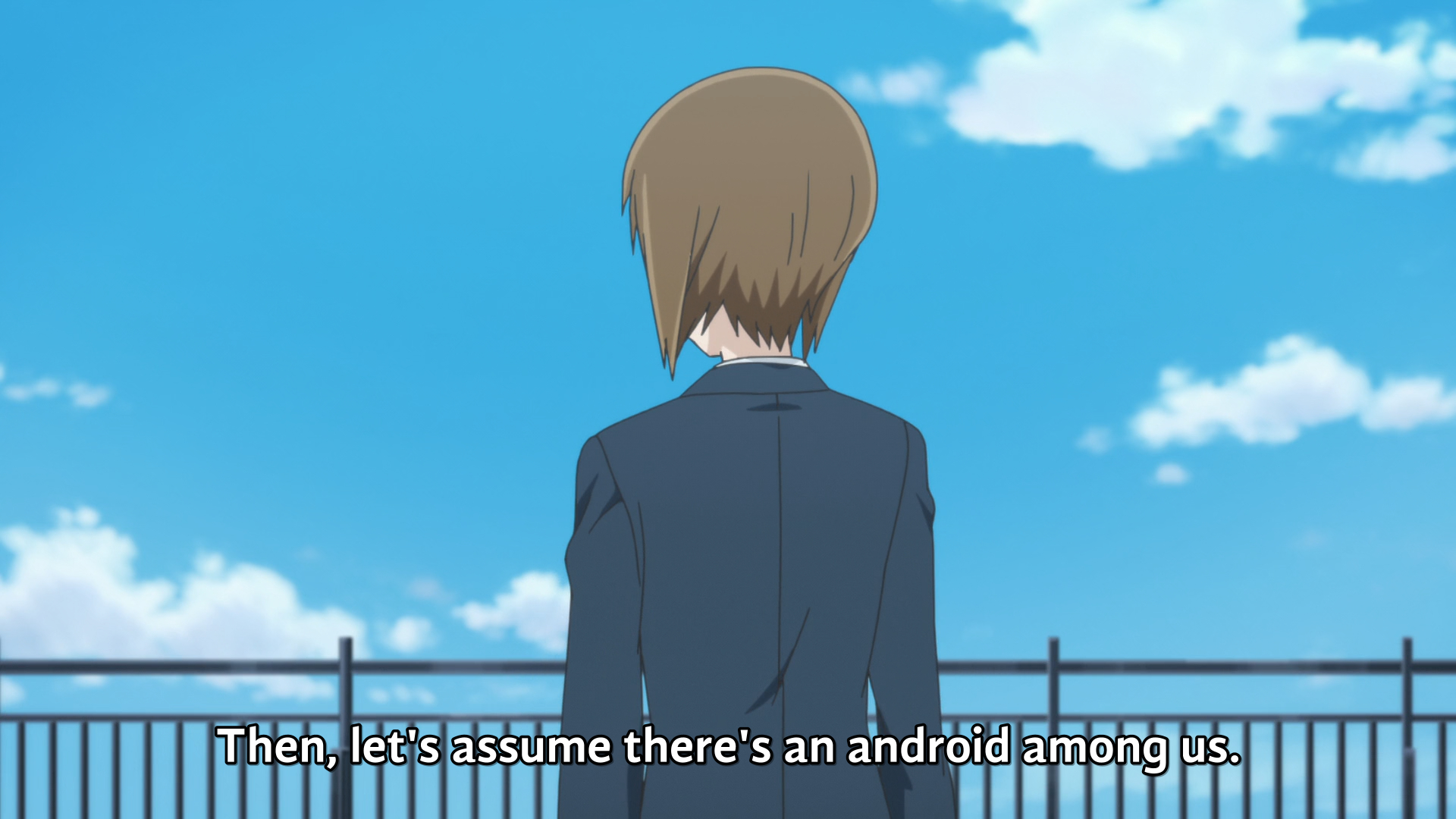
Sagrada Reset is a science-fiction/mystery series set in a city called Sakurada where roughly half the population has some kind of supernatural ability. The story centers around three characters: Asai Kei, whose ability gives him a perfect memory; Haruki Misora, who can reset time up to 72 hours (with some limitations); and Souma Sumire, the girl who brings them together.
The 24-episode anime adaptation, based on a series of seven novels by Kono Yutaka, is being directed by Kawatsura Shinya (Non Non Biyori, Tanaka-kun Is Always Listless) at david production (JoJo’s Bizarre Adventure, Planetarian).
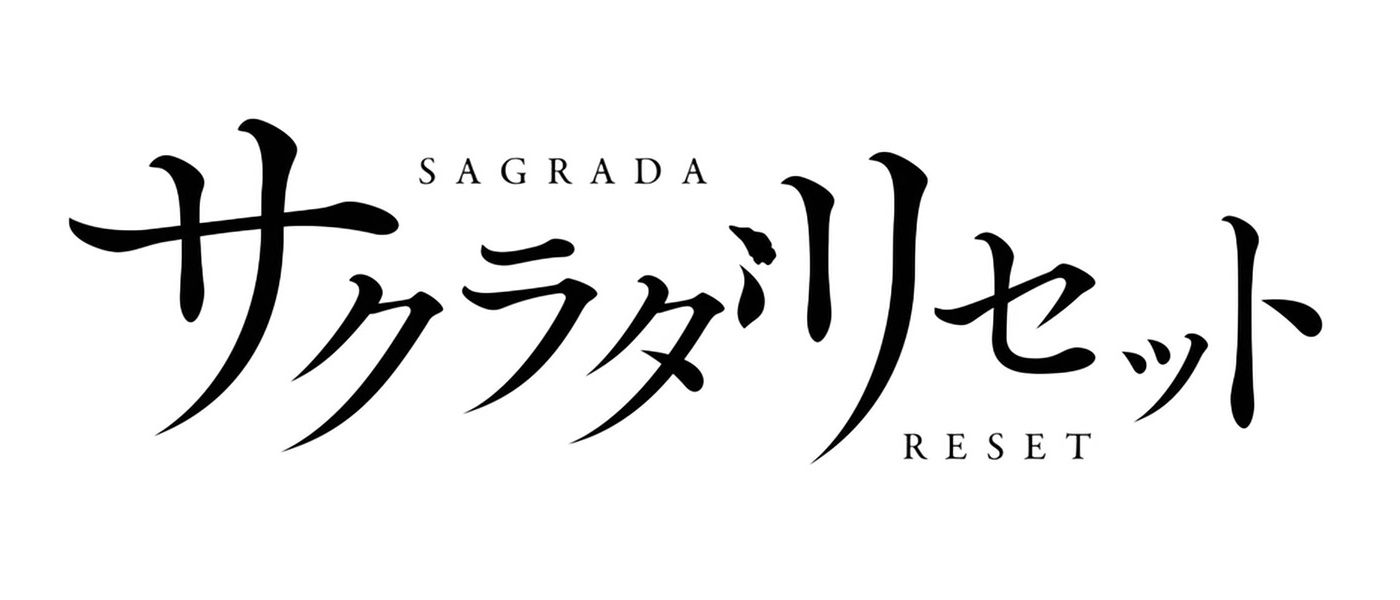
In the series premiere, the enigmatic Souma Sumire poses a hypothetical question: suppose there’s an android among us, indistinguishable in all ways from an ordinary human. Who do you think it would be?
Asai Kei initially dismisses it as a meaningless proposition, saying none of them are androids, but Souma encourages him to keep it in the back of his mind. Coming up with an answer will be their summer group assignment, and a reason for the three of them to continue meeting up.
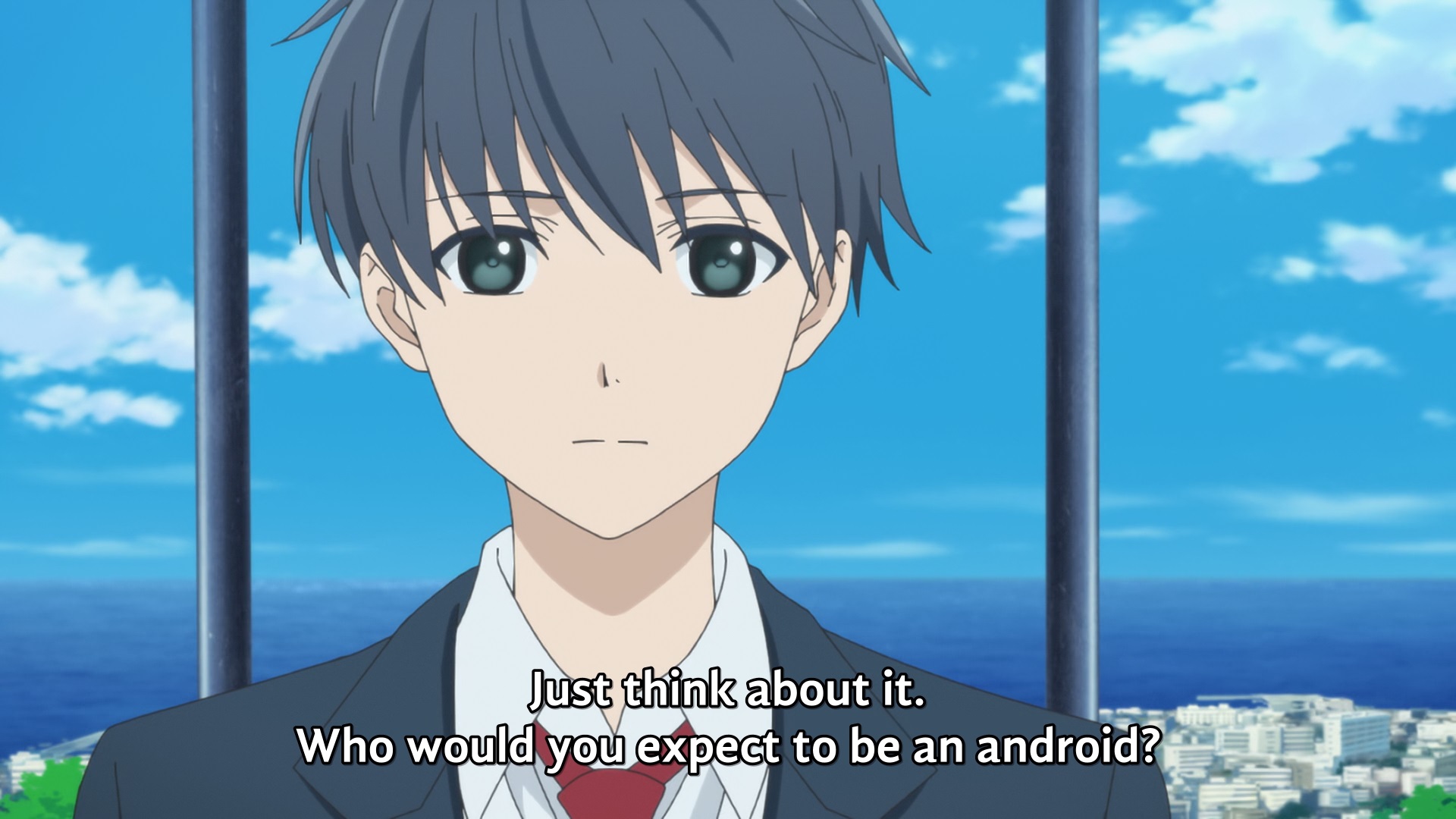
The third member of the trio—Haruki Misora—remains silent for the entirety of the conversation. She is a girl of very few words, only speaking when necessary and coming off as almost robotic whenever she does.
A few minutes later, we see Haruki pass by a crying girl, attempt to reset, and then begin to walk off unfazed when she realizes she doesn’t have a save point. She stops to help only when the girl herself reaches out to ask.
Based on this stark display of apparent emotionlessness, one might at first conclude that Haruki is the intended android. However, we soon learn the reason for this—she acts strictly in accordance with a set of three self-imposed rules, created as a child to protect herself from an overwhelming, paralyzing degree of empathy. So long as she follows them, she doesn’t have to expose herself to all the pain and sorrow in the world.
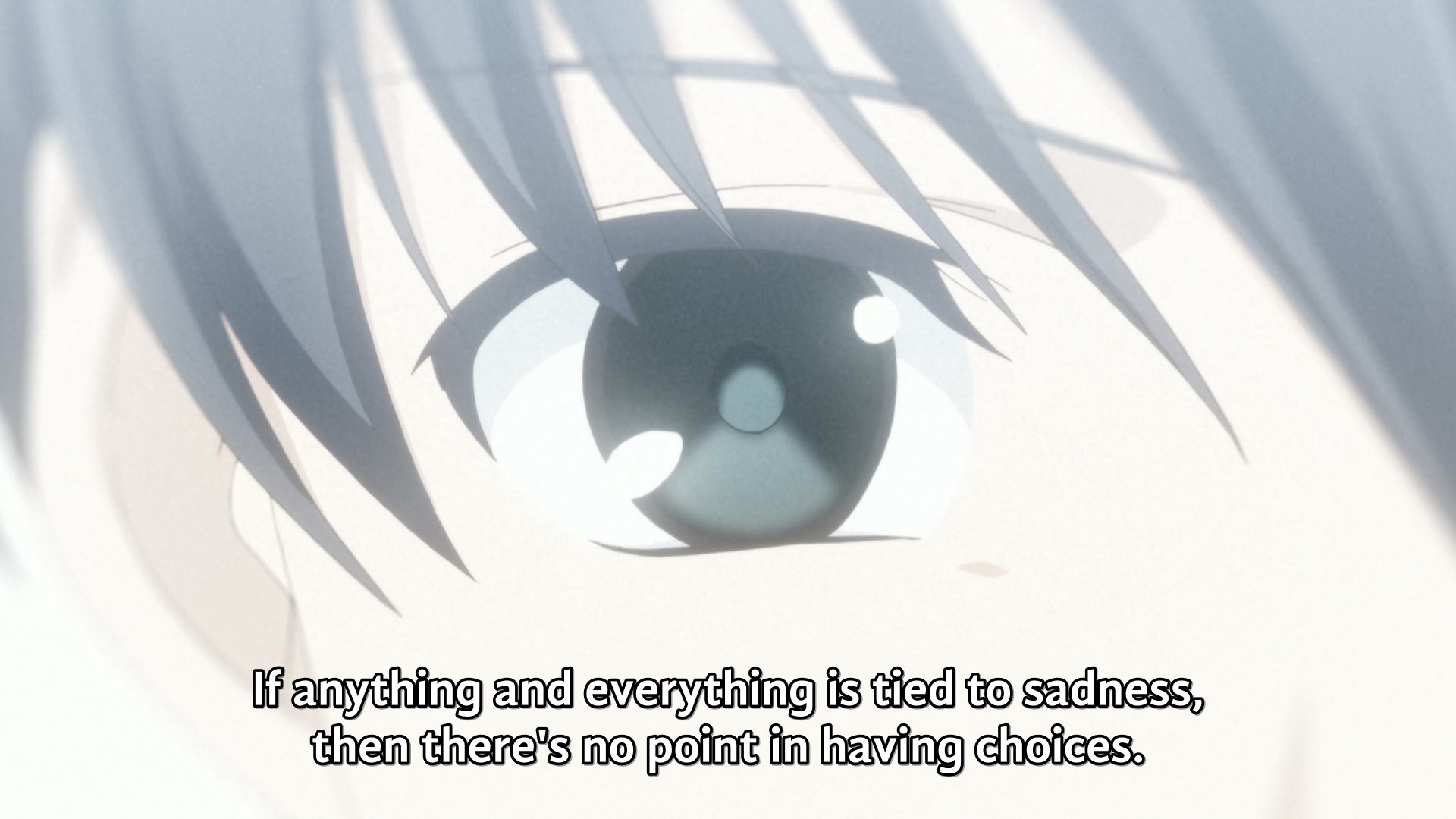
Haruki’s rules are as follows:
- She refuses to do anything that might have significant negative consequences.
- She will do as anyone asks of her, so long as it does not violate the first rule.
- She will use her ability to reset if ever she sees someone crying.
Kei likens her rules to Asimov’s Three Laws of Robotics, though noting that they diverge at the third point—where the true heart of Haruki’s actions lies. Her self-defined purpose, the foundation upon which all her decisions are made, is a sincere desire to erase others’ sadness from the world, and that proves her humanity.
So our first candidate for android is out of the running, but the implications of Souma’s question still linger. If the proposed “android” is indistinguishable from a human, how do you make that distinction? Where do you draw the line? And what does it mean to be on one side or the other?
The end of the first episode provides a look at a potential answer—in the form of the girl Haruki nearly snubbed earlier. Her name is Kurakawa Mari, and she was created seven years ago by her mother’s special ability, manifested when the “real” Mari was born stillborn. This replacement Mari grew up like any other child, save for the method by which she came into the world. She’s indistinguishable from a human—exactly like Souma’s theoretical android.
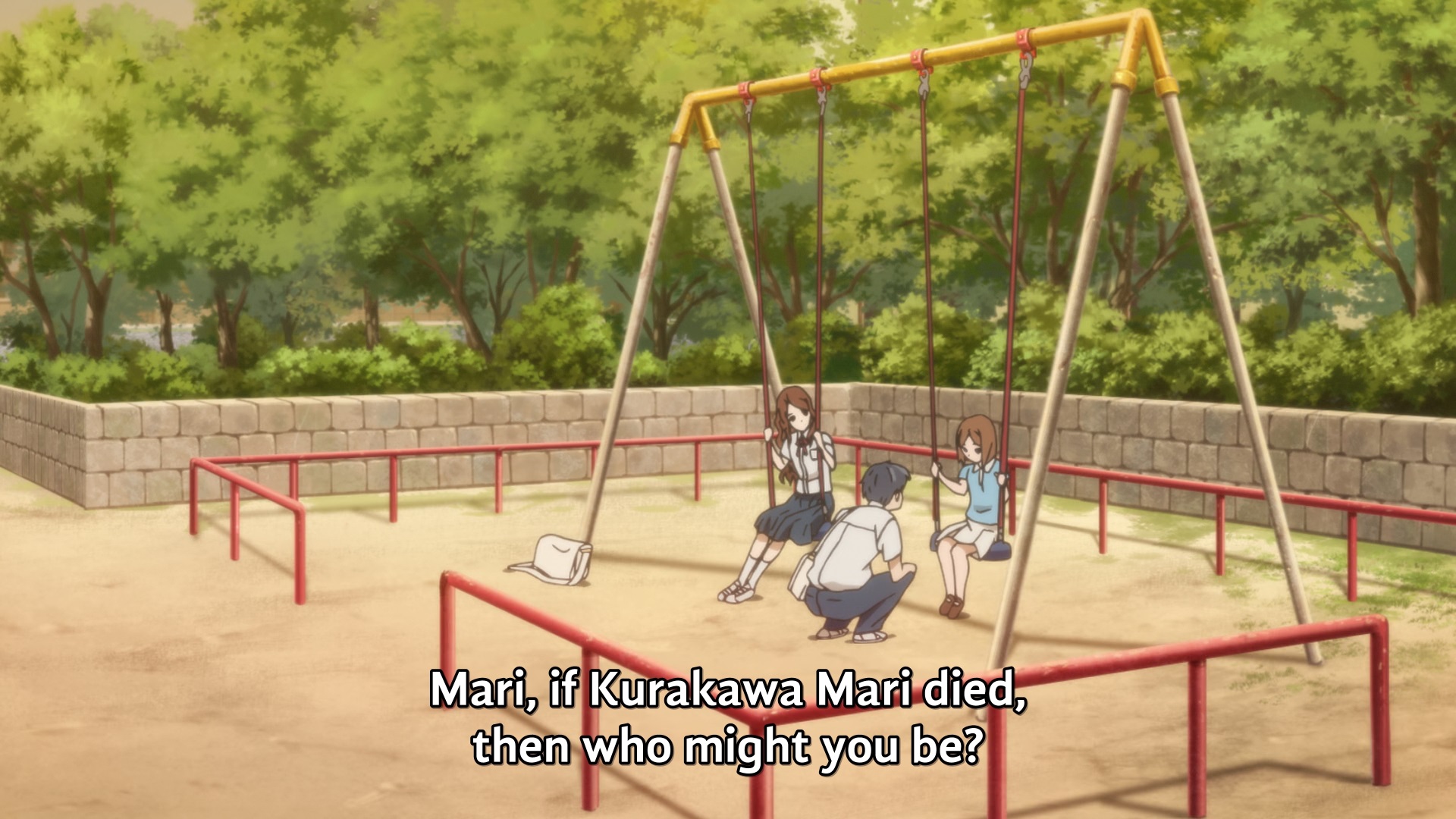
For three years, Mari’s mother raised her as her own, but then her husband ran off and she slowly stopped being able to accept Mari as her genuine child. And four years later, she became entirely unable to bear the weight of what she had created, finally deciding to leave Sakurada at the Bureau’s recommendation.
Once you step outside the city’s borders, you lose your memory of everything related to the powers within, allowing her to leave it all behind her, and the Bureau—an administrative organization in Sakurada that oversees all matters supernatural—to keep a potentially troublesome ability under wraps.
After Haruki allows Mari to be taken into custody by an agent of the Bureau, Kei challenges her. You got us involved, so you make the decision—are you really okay with just standing idly by as this seven-year-old child loses her mother, her only family? Or do you want to do something about it?
Haruki concedes that she does want to help, so they reset, and using Kei’s ability to preserve his memory, set off to prevent Mari’s mother from leaving before it’s too late.
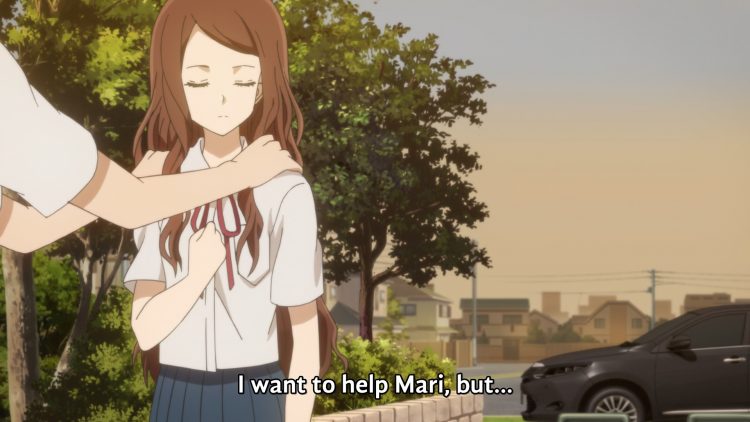
In order to pull off his plan, Kei enlists the help of Nakano Tomoki, who has the ability to project his or someone else’s voice directly into another person’s mind, and Sakagami Yousuke, who can allow one person to share another’s ability. He sends Haruki and Tomoki to the hospital where Mari waits, bringing Souma and Sakagami with him to confront Mari’s mother and try to convince her to stay.
Mari’s mother is certain she’s only hurting Mari by being around. She can’t properly love Mari because she can never forget about the baby who didn’t survive. It would be cruel to remain with a child she can’t sincerely love. But Kei contends it would be crueler to leave Mari behind.
He asks her to think about the situation from her daughter’s perspective. What if she had died and Mari created a clone of her instead? Would she not wish her own child to have that happiness just because it wasn’t the “real” her? Did that invalidate her love? Did it disqualify her from having someone to love?
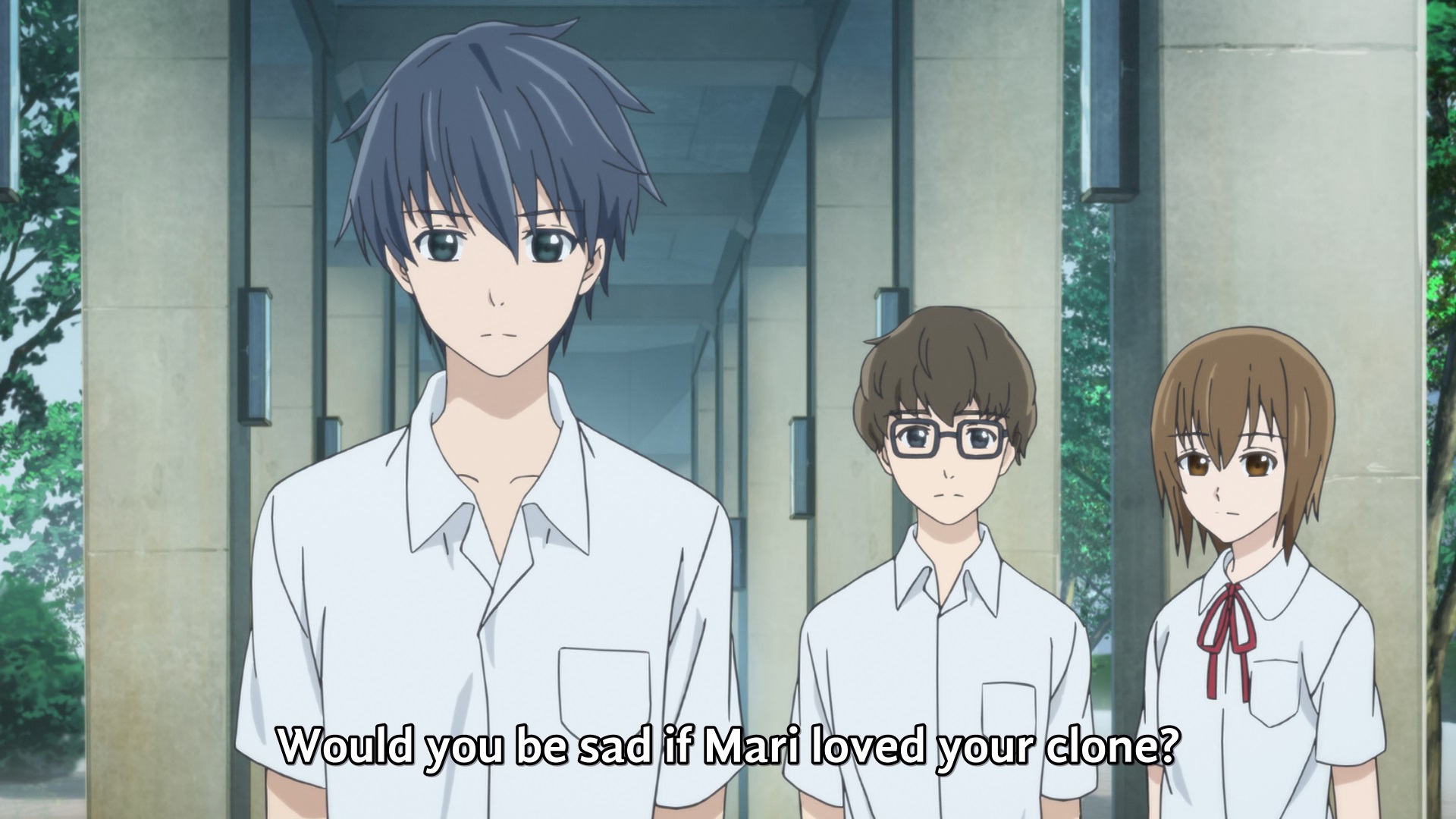
Mari’s mother still isn’t fully convinced, so Kei uses Sakagami’s power to share his perfect memory with her, allowing her to recall precisely how she felt when Mari was born. Whether that love was real or not.
Then, as she’s reeling from the flood of faded emotions, Tomoki delivers Mari’s words directly to her from the hospital.
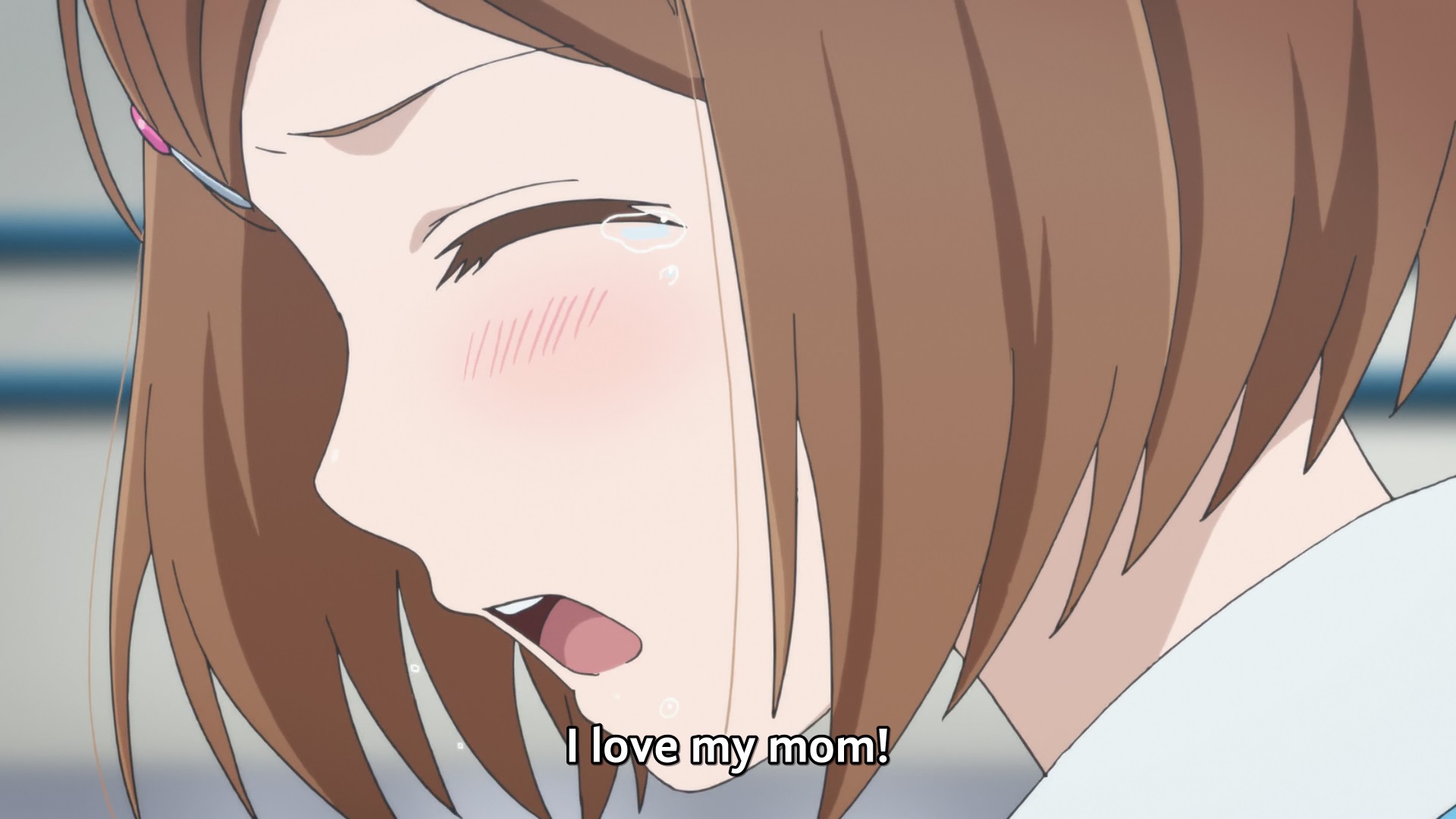
Mari may be an “android,” but Sagrada Reset declares that, ultimately, it’s irrelevant. She’s just as real as the rest of us. The love she feels for her mother is real, and the love her mother felt for her was real too. And that’s all that really matters—not how she came into the world. Mari’s mother is allowed to both grieve for the Mari who didn’t make it while also loving the Mari who did.
And when it’s all over and Souma presses Kei for an answer to her hypothetical question, he sticks with his original response: no one, they’re all human. But Souma won’t take that for an answer, so he flips it around. If an android is an artificial being, in the sense that it was formed by human hands, then we’re all androids.
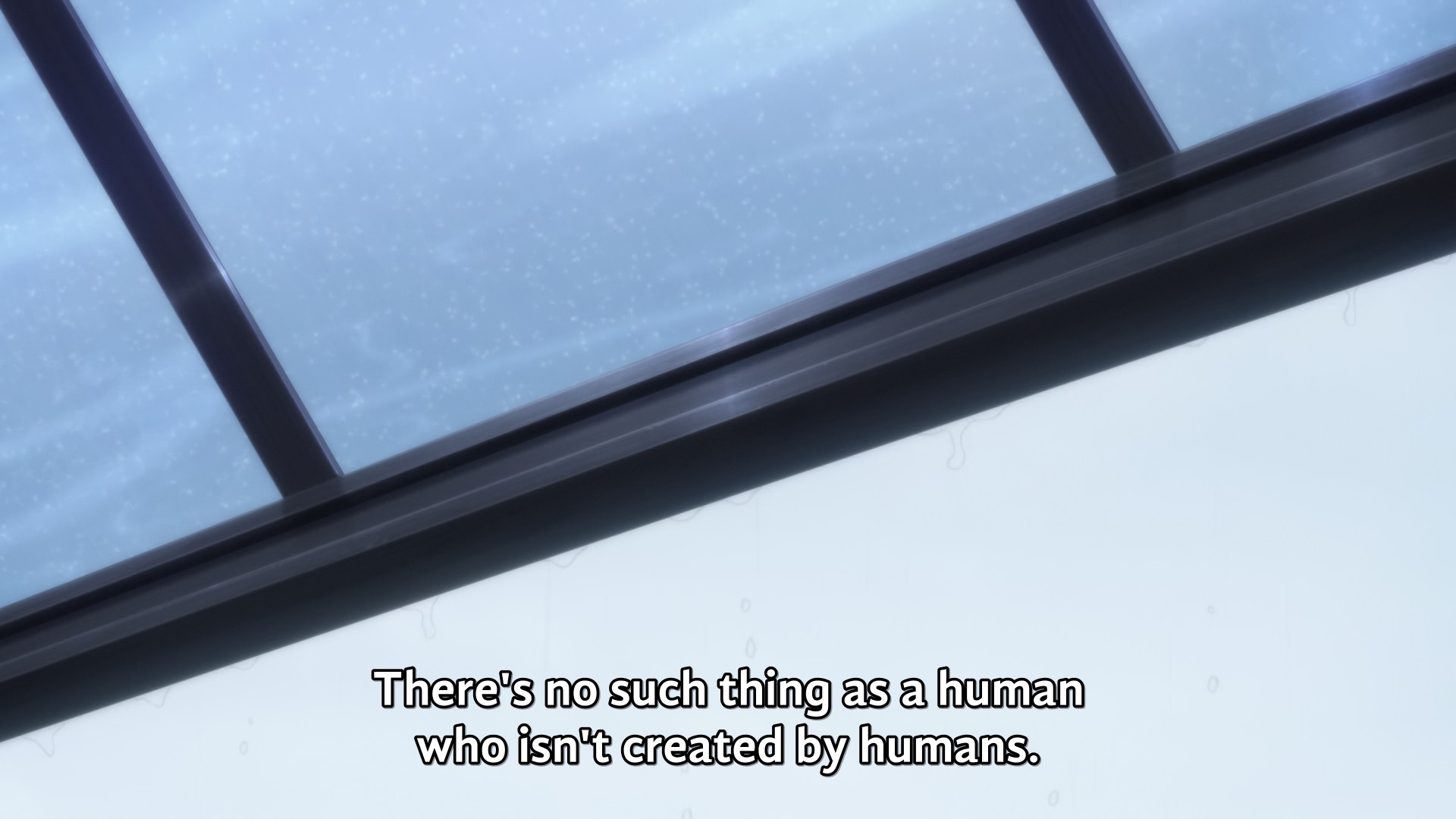
The question of what it means to be human sits at the very heart of Sagrada Reset. Where does the line fall between “human” and “android”? How important even is the distinction? It’s a question woven into the fabric of the series, and one you’ll see manifesting again and again in different forms as the show progresses.
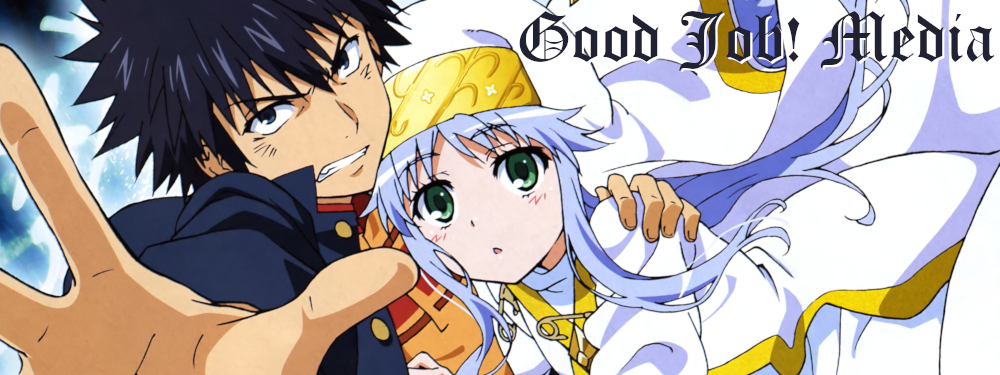
wat da fuk did I just read
Sagrada Reset.
This was a good article. Nice timing in the screenshots, well though-out and explained comparisons. Keep it up!
“Careful and intelligent insight”? Uh, sorry to burst your bubble here, but this is just a summary of the first two episodes.
Why am I not surprised that the only “anonymous” poster is the one to talk shit about it? What a shock.
It’s still a very nice piece of writing for those that haven’t read the LNs and want to better follow what on earth is going on in this show.
Should I read this before I start watching the anime? Are there any spoilers?
It would spoil the contents of Ep1 and Ep2 somewhat. It’s basically a summary and further explanation of the content presented in those two episodes.
It is best read after finishing Ep2.
Thanks for the reply. Bookmarked for after Ep2.
looks like nice write up, but i havent watch it the series yet so need to avoid spoiler
I love my mum too ( ͡° ͜ʖ ͡°)
Meanwhile, Fyurie, Ep 5 would be marvelous.
:^)
Once the encoder that sat in for this week uploads his encode, it should be all but done.
Sorry about that.
Additionally, this has no effect on Ep6’s release timelines as the episodes are in different statuses, so expect a more usual release window for it.
Nah, it’s good. I figured there was a decent reason. (I just haven’t given you a hard way to go in a while, so I thought now would be a good time.)
Hah, it’s all good. I want to see it back on schedule myself. The official subs for the show are disgusting so I hate ours not being out.
You’re welcome to ask any other aniblogger you know if you don’t believe me, but that scene died years ago. And guest episode summaries from a site dedicated to a similarly dead scene is not gonna result in an aniblog renaissance. As such, I would not recommend making articles a pillar of the new GJM unless you think I’m totally 100% wrong about this for whatever reason.
If you really want to keep in the anime public eye, Youtube is your best shot.
Our histories aside, I appreciate your opinion on this.
Though, I wouldn’t say that what we’re trying to do is revive any one scene. For us, it’s more about having a wider offering of content in general.
We aren’t resting on any one thing to support our site going forward, rather, we want to have a mix-up of things to serve a large spread of people.
This post was reasonably well-received overall, and hopefully, some of our other content ideas will also draw some new users into our viewer base.